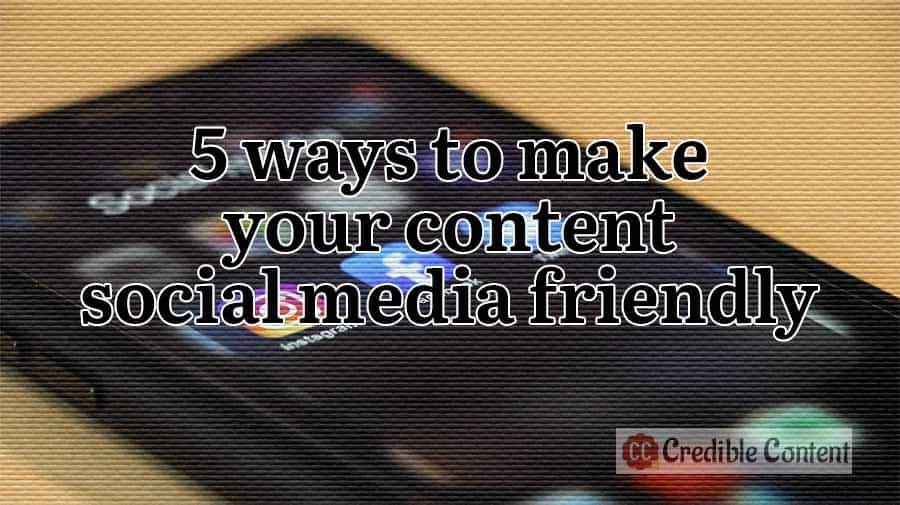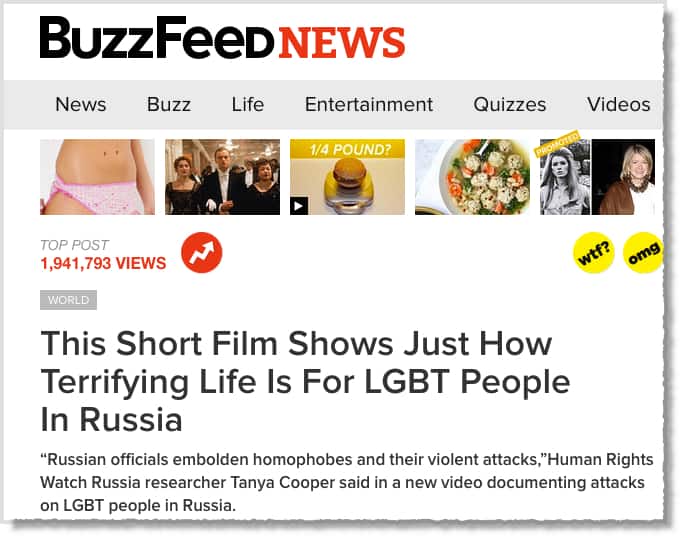
5 ways to make your content social media friendly
Do you often worry that your content is not being shared on social media and social networking websites?
Aren’t people paying attention to your content or they are not motivated to share it on their social media timelines?
If this is the problem, are you publishing social media friendly content?
What exactly do we mean by “social media friendly” content?
Although it is very important that people abundant share your content on social media, before going ahead with sharing my other thoughts with you, I would like to stress that don’t overtly worry about the social media. Write and publish useful content and make it easy for people to share it and the rest automatically.
There was a time when people knew of Internet by email.
Many people thought that if you were checking email, you were “Interneting”.
Yes, they were familiar with the concept of websites, but it was mostly email.
The same happens with social media these days.
It is so prevalent that many people, people who haven’t used the Internet much before, think that it’s Facebook, Twitter and YouTube that are Internet rather than millions of websites.
In rural India, shopkeepers selling Mobile Sim cards or people running mobile repair shops are charging Rs. 50 to install Facebook on mobile phones and many think that Facebook itself is the Internet. They access the web for the first time through Facebook.
This means that social media and social networking websites have grown into a totally separate entity and for the purpose of content marketing ignoring these websites is like ignoring the telephone or the email while trying to do business in the contemporary world.
Just as you need good search engine rankings to promote your content, you also need to optimize your content for social media and this is what you mean by making your content “social media friendly”.
Your content is social media friendly when
- People feel like sharing it on their timelines (Facebook, Twitter, Google+ or LinkedIn)
- They don’t need to modify your headlines and descriptions in order to share your links
- Sharing your content is just a matter of a couple of clicks
Why do these traits matter? Why do they make a big difference in the way people share your content on social media and social networking websites?
Most of the sharing on social media is instinctive. Sure, professionals like me take extra pains to share stuff even when it is unfriendly and difficult to share, but a normal user doesn’t take extra pains.
Hence, your content should be very easily shareable, preferably, just through a single or a couple of clicks or taps.
Previously I used to think that why bother with people who don’t want to make much effort to share your content, but then I realized that it is not about these individuals.
Even if they themselves are not interested enough to go to extra lengths, your content gets visibility and it may reach people who are more serious about what you have to say.
Why it is important for your content to get social media visibility?
Take for example Facebook. There are more than 2.45 billion monthly active users over there. On daily basis, 1.62 million people use Facebook actively. 7 in 10 US adults use Facebook (source). 89% marketers use Facebook for brand marketing (source).
LinkedIn has more than 575 million users and 260 million monthly active users (source).
On an average, people spend 3 hours on social media and social networking websites. 54% consumers use social media to research products before buying (source).
Many social networking companies, including Facebook, are taking measures that when people switch on their phones, they log into Facebook in the beginning itself so that whatever activities they carry out, they do them within the Facebook ecosystem.
I’m not saying I endorse such developments, but it shows that an increasing number of people might be doing most of their activities, including communication, newsgathering, product evaluation and buying and selling, within social networking ecosystems.
Advertising and PPC campaigns are always an option, but you can increase your reach by writing and publishing social media friendly content on a regular basis. Interactive posting of content, especially created by brands and businesses themselves, get more attention from social media users compared to advertisements.
For a very long time I have been thinking of dabbling with infographics.
I recently tried to work with a neighborhood graphic designer but although she is good at using image manipulation tools like Photoshop and Illustrator, she was terribly lacking on the creative side.
We were working on a project and I had to tell her practically everything.
The only blessing was that whatever I told her she was able to accomplish it.
Anyway, this is the infographic that I have created titled 5 ways to make your content social media friendly. It isn’t much but it’s definitely a beginning.
The five ways are:
- Create compelling headlines: Your headlines are, as far as optimizing your content for social media goes, the most important aspects of your content.Compelling in this context means they should invoke strong feelings, so strong that people should be driven to share your content on their timelines.
- Publish irresistible content: In my daughter’s social sciences book there is a headline that goes something like this, “one man’s garbage is another’s treasure”.It is about the garbage collectors who make money off the garbage we throw away so thoughtlessly.
So what is irresistible and what is not, depends on individual need, but catering to your niche, create content that is highly useful and valuable.
It should solve some purpose and this is why people will share your content.
When sharing your content people must feel that they are doing a service to their friends and followers.
Always think: why would people share what you’re writing?
- Use social buttons: It’s easier to share content when you just have to click a button.I like the way you can share certain portions of blog posts and articles published on Medium.
The relevant, share-worthy portions have a Twitter icon nearby. You just need to click the icon to broadcast that particular sentence.
- Use social optimization tags: These tags normally reside in the header area of your web page.In a typical web page there are already title, description and keywords tags.
You can also have dedicated tags for Facebook and Twitter to instruct various social media and social networking channels to automatically pick up customized headings and descriptions rather than using the default ones.
If you are using WordPress to manage your website or blog, you can easily get plug-ins to achieve this.
- Choose publishing time carefully: You will need some time to figure out during what time of the day your target audience is most active on social media and social networking websites.Publish your content when there is greatest chance of it being noticed and shared.
- Publish different content for different social media platforms: Content consumption on different platforms have different patterns.Content that is suitable for LinkedIn may not be suitable for Facebook and content that is suitable for Facebook may not be suitable for Twitter. Repeated testing will tell you which type of content in your industry performs better on which social media platform.






